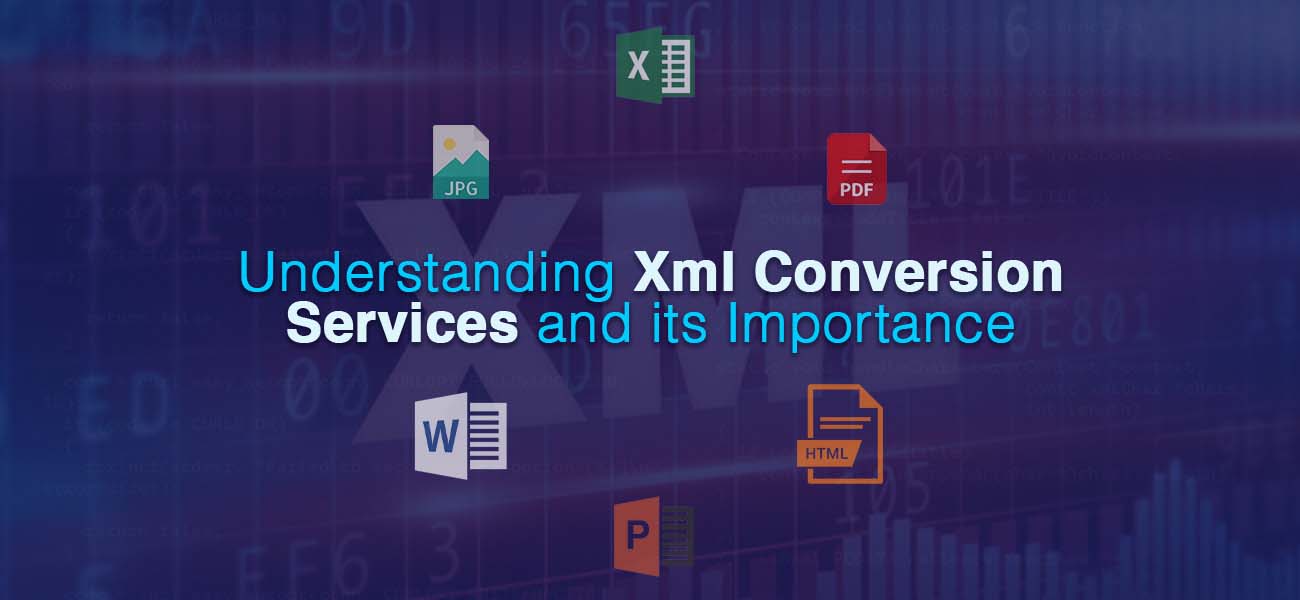Understanding About Xml Conversion and Its Importance
Outsourcing is too common these days and main factors attributing to this trend are the benefits provided including cost-effectiveness, time saving and access to expertise. When it comes to XML conversion service, outsourcing would be a sensible option.

Understanding the XML file format
When expanded Extensible Markup Language, it is a web publishing format used mainly for displaying and storing information on web. Being a media independent platform, it has reasonably become a highly accepted web publishing standard.
Though this is also a markup language just like HTML, there are certain qualities which justify the ever-increasing queries received by a typical XML conversion service provider. Some of the advantages offered by XML are capability to be authenticated, scalability, versatility and flexibility.
On conversion, the documents are converted to functional, structured and dynamic format from unstructured cluttered arrangement. This increases the efficiency of delivery system and its usability.
Benefits of XML file format
The use of XML for information exchange has manifold benefits including:
- XML makes use human language instead of computer language. Even novices can read and understand XML. For professionals, XML coding is far easier than coding in HTML.
- XML works well with Java™ and it is completely portable. An application from any kind of platform can access your XML-based information and read it if it is built with the capability to process XML.
- XML can be extended. You have the option of getting your own tag created or you may choose to use tags developed by others as well. Such tags should be based on your domain’s natural language, they should have the characteristics you require, and they should make complete sense to you and your users.
Importance of XML in business
Businesses have to exchange information with each other through various means including email and faxing, which demand human skills such as data interpretation and data entry. These processes are prone to human errors and delays. An XML document bears the description of the content that it contains. This information is reflected in the header section of the content, which allows the recipient system to read the header first in order to understand how to handle it. This description is independent of the third party definition that may often prove to be inaccurate.
XML has a unique connection with data; it allows efficient storage and transfer of data across networks. The language can be used across diverse platforms, which means that the data in XML language can be transferred and manipulated easily. This accelerates data processing, improves response times, and promotes better flexibility in web-page display. In the B2B E-commerce domain, XML supports process-streamlining by allowing for information-sharing between the front and the back-office systems. Secondly, the implementation of vertical-sector XML standards will lead to improvement in communication within the supply chain, which is destined to be an effective replacement for electronic data exchange.
Importance of xml in web
Uses of XML and its advantages are many. XML can be used for document-formatting using a web browser. XML promotes effective processing of a document’s content and with this, users get the opportunity to create their own XML-based tags. XML works well with different types of operating systems and offers flexibility of operations. Here are the key benefits:
- Ease
XML induces simplicity of operations and follows W3C standards. Its openness is endorsed by market leaders in the software industry. With XML, new set of tags can be easily created. - Self-description
XML provides a solid foundation for author identification and assigning of version numbers at the preliminary level. XML tags hold several characteristics concerning the author or version. - Readable context data:
The context information of XML is its biggest strength. The context information includes element structure, tags, and attributes that can be utilized for the interpretation of content significance as well as for data mining activities. - Content presentation is secondary:
The goal of XML is to describe the content’s meaning in elaborate terms; it does not lay emphasis on content presentation. If you have to alter and regulate the look of an XML-based website, you do not need to alter the content of the document. You can easily generate several presentations of the similar content. XML is compatible with multilingual documents and Unicode and this is extremely important for application improvisation in accordance with the guidelines of the international web development standards. - Data evaluation and aggregation:
The structure of XML documents allows for easy data assessment and aggregation. XML also enables the featuring of different types of data. The data might include multimedia formats such as audios and videos as well as ACTIVEX and similar components.
Types of XML formats
Here are a few XML formats that you can generate from Microsoft Access database information:
- Variation 1 of Traditional: This XML format makes use of elements instead of attributes.
- Variation 2 of Traditional: This format utilizes a single element ‘State’; the values signify the attributes.
- Variation 3 of Traditional: This XML format resembles the first variation, but it makes use of diverse element names and a configuration that’s a bit different.
- Variation 4 of Traditional: This format resembles the first and third versions, but it uses diverse element names.
- Variation 5 of Traditional: This format resembles the second variation, but uses diverse element names.
- Microsoft Access Auto XML: This is an auto-generated format derived from Microsoft Access. This is an XML Schema for this form of XML.
- Microsoft Excel Auto XML: This is also an auto-generated format that can be obtained using Microsoft Excel; in fact it is Excel’s XML format.
- RDF/OWL: This format is RDF/OWL.
- XBRL: This is an XML This denotes a type of a validation reportthat denotes how individual states contributes to the overall population.
So which XML format is the finest? Well, the importance of a particular type of XML formatting depends on what you desire from the information. In case you want a small group of people to access a simple information set, old XML formats are your best options. You can use any format you like, however, XML is the best format for the web.
PubMed format
PubMed is a free platform that supports the search and recovery of content related to biomedical and life sciences with an aim to improve health at global and personal levels.
The PubMed database includes over 30 million citations and summaries of biomedical literature. It does not consist of full-content journal articles; links to the complete content are sometimes available from secondary sources such as the website of the publisher or PubMed Central (PMC).
PubMed, which is made accessible online to the common man since 1996, was created by the National Center for Biotechnology Information (NCBI). Citations in this database are primarily based on biomedicine and health-related content. The content is also related to subjects such as behavioral sciences, life sciences, bioengineering, and chemical sciences.
DTBook format
DTBook or DAISY Digital Talking Book is an XML-based format. This format is used in EPUB e-books as well as in DAISY Digital Talking Book. The DTBook format lays a strong focus on structural encoding, but it is quite simple compared to other similar formats such as DocBook and TEI.
DTBook was created by the Daisy Consortium as a simpler substitute for HTML, with an aim to serve the needs of visually-impaired people. So it puts strong emphasis on proper navigation and detailed expression of visual elements.
DTBook is further developed by the Daisy Consortium and is defined with a DTD as part of the NISO standard Z39.86-2005
Can you by yourself initiate the conversion?
Well! It’s possible. There are a lot of software options that can be purchased for XML conversion service. But the hindering factor is the limitation in the number of formats to and from which conversion can be done. So, it may not be comfortable always. This is why outsourcing to a professional team is always considered better.
How are you kept comfortable?
The only initiative that you have to take is sending your outsourcing team the data to be converted either in soft copy or hard copy format. Project Manager of the company after analyzing the data develops a schedule and plan based on client specifications. Task is then assigned to different team members and all instructions are communicated. Firstly the text is OCR’d followed by proofreading. Then XML tags are applied as well as XML parsing is done.
Whole process involved is always under the careful observation of a dedicated quality control team. For quality XML conversion services kindly contact us.



